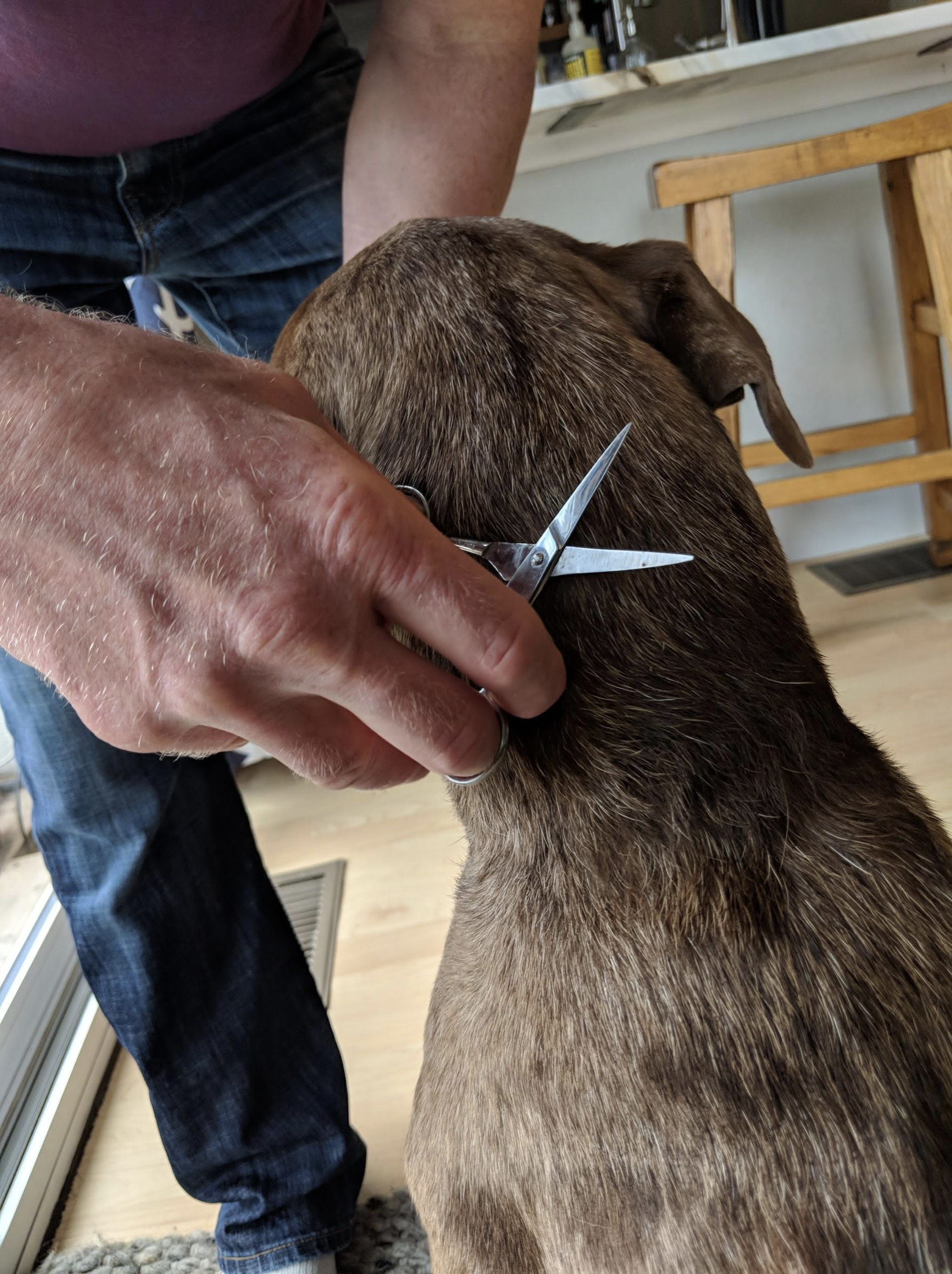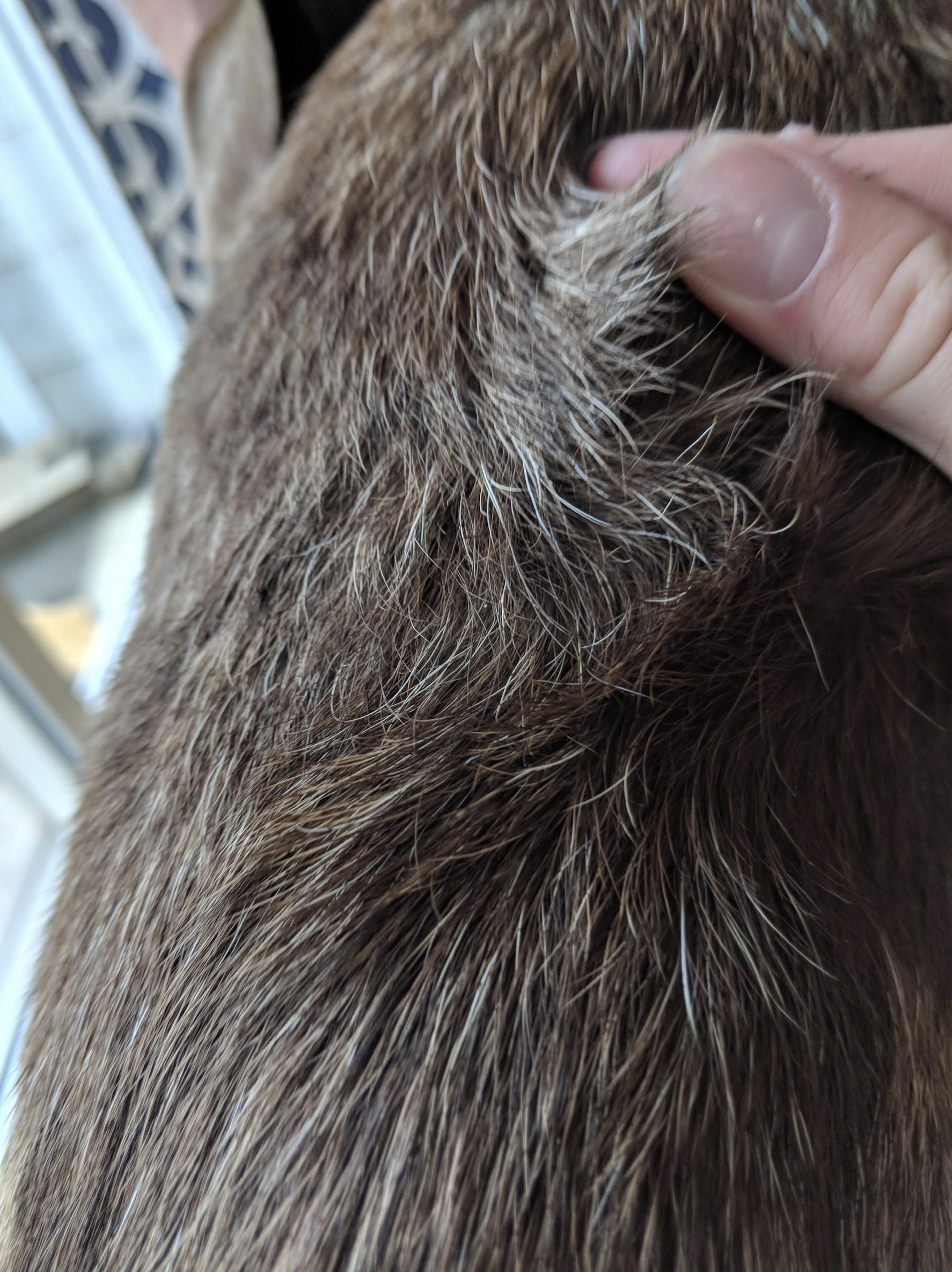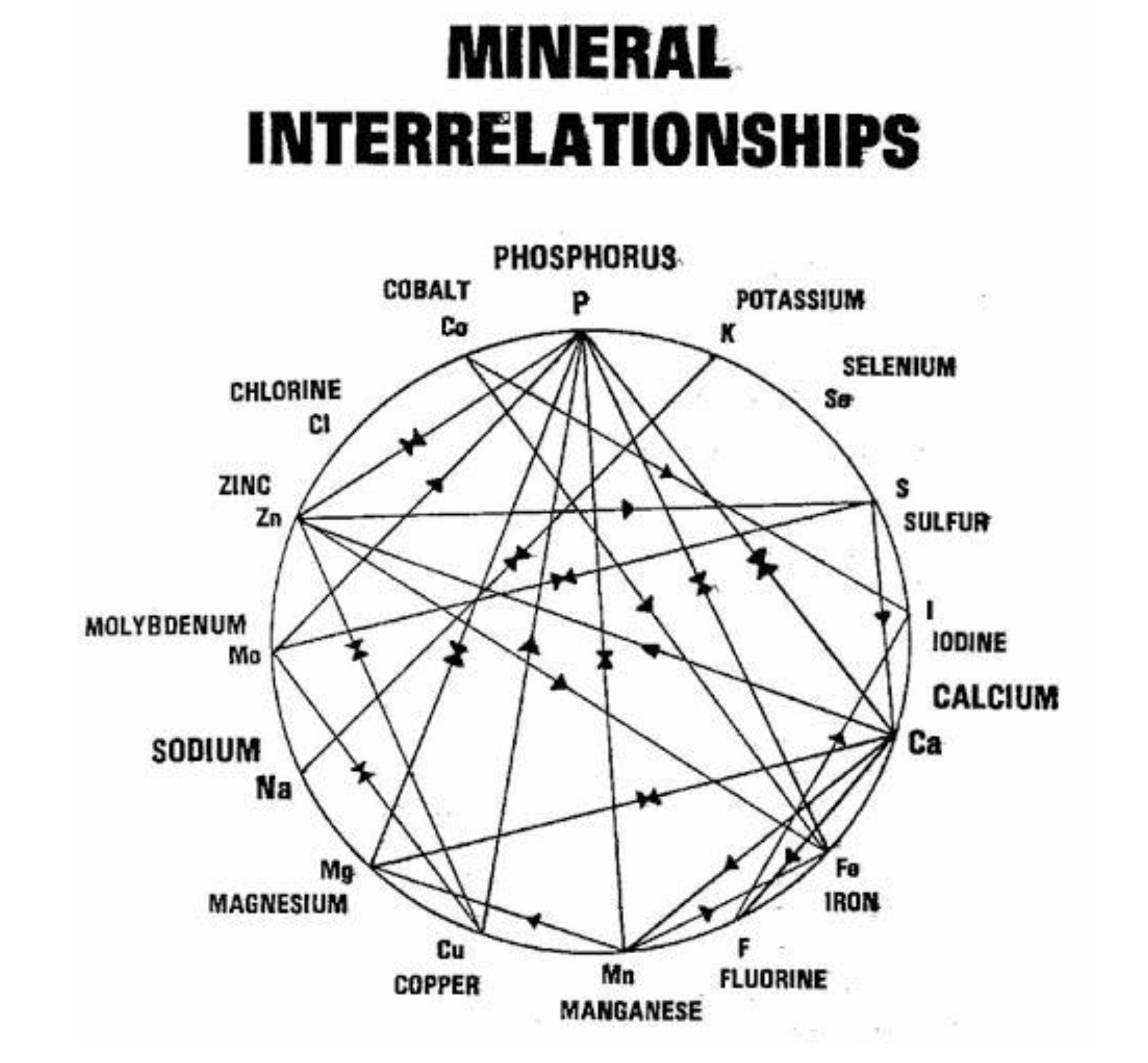Hair Tissue Mineral Analysis (HTMA): Another Key Test to Holistically Healing Your Dog
Posted by Jennifer Carter and contributing authors, Matt Rowe & Dr. Laurie Coger on Jul 31st 2020
I am sharing this information about doing an HTMA test because the truth is that minerals are the “spark plugs” of life. They are involved in almost all enzyme reactions in the dog’s body.
"Trace elements are more important than are the vitamins, in that they cannot be synthesized by living matter. Thus they are the basic spark-plugs in the chemistry of life, on which the exchanges of energy in the combustion of foods and the building of living tissues depend." - Dr. Henry Schroeder, The Trace Elements and Man
Without enzyme activity, life does not exist. The foundation of your dog’s health lies in the adequate intake and ideal mineral ratios. Anything else you do for your dog’s health is great, but minerals must be the foundation and priority. Once those are balanced, the majority of your dog’s health issues begin to subside.
Overview:
Did you know that a dog’s hair/fur acts as a definitive, scientific, long-term record of “substances” that currently exist or has been historically present, in a dog's circulatory system, and that it has a major impact on both their mental and physical health? The most important way for these “substances” to enter the hair follicle is via the bloodstream. A dog’s hair cells form very rapidly and the hair follicle is provided with a good blood supply which allows “substances” circulating in their bloodstream to be delivered to their hair follicle.
This month, Volhard Dog Nutrition would like to thank Matt Rowe, owner of ParsleyPet (HTMA testing) and Dr. Laurie Coger, Veterinarian and organizer of the Healthy Dog Workshop for partnering with us to provide you with the most accurate details regarding HTMA testing.

The advantages of testing a hair sample over a blood sample are obvious:
- Collection is non-invasive
- Easy to collect at home
- The window and levels of substance detection are extended to months compared to hours for blood analysis.
- Blood provides you a snapshot of substances of concern from a fixed point in time but Hair Tissue Mineral Analysis (HTMA) is a test that gives us the daily average levels over 90 days.
- HTMA is significantly more informative than a blood analysis covering a period of perhaps up to one day.
What is Hair Trace Mineral Analysis (HTMA)?
Knowing your dog’s internal health is very difficult. If the dog’s issue has not expressed itself outwardly such as brittle hair, dry skin, allergies, or digestive issues- how can you guess what is happening on the inside?
“ParsleyPet is on a mission to help your dog live a longer healthier life, so you do not have to say good-bye too soon. ParsleyPet provides a Nutritional Blueprint, a hair tissue mineral analysis (HTMA) diagnostic test, analyzing 48 key nutrients, and toxic heavy metals. We also provide education to pet parents that build awareness and utilizes objective data of environmental toxins and other diet-based pet health concerns.”- Matt Rowe
The HTMA test reveals your dog’s overall mineral balance. It shows you if deficiencies are present and even heavy metal toxicity. But many pet parents don't realize that it also provides a blueprint to increase your dog’s performance, trainability, improve energy, and empowers you to help them become healthier. HTMA reveals and explains the causes of many canine health symptoms and disease, whose underlying causes are largely related to nutritional deficiencies, mineral imbalances, and heavy metal and chemical toxicity.

How Does Hair Collect Mineral Information?
Hair is formed from clusters of matrix cells that make up the follicles. During the growth phase, the hair is exposed to the internal metabolic environment such as the circulating blood, lymph, and extracellular fluids. As the hair continues to grow and reaches the surface of the skin, its outer layers harden, locking in the metabolic products accumulated during this period of hair formation. Although all breeds vary in hair growth, the test looks at a length a time instead of a snapshot conducted with a CBC (complete blood count). Dr. Laurie Coger states that “ this test can provide a wealth of information not found in other tests. When this test is included in the wellness exam review, this test can be used alongside other clinical results to get a complete picture of health, proactively. If the results are good, then you also have a baseline at that age and in that moment to compare future tests if illness does occur.”
“HTMA can be particularly useful for those making their fresh food diets, whether raw or cooked. We can detect deficiencies or excesses before they become a problem.” - Dr. Laurie Coger, Veterinarian.
Over 40 years ago, Dr. Eck and Watts discovered a nutrient pattern generated from their analysis of hair. They discovered that essential nutrient minerals do not deposit randomly in the hair follicle. The nutrient mineral deposits are in clearly identifiable patterns.
“The blood will 'borrow' nutrients from cells and tissues to create homeostasis in the blood”. - ParsleyPet
“Blood is homeostatic. That is, blood can balance itself in essential minerals at the expense of cell and tissue reserves of these same minerals.” – Dr. Rick Malter, Ph.D., The Strands of Health, 2003.
Example: According to ParsleyPet, a dog’s cells and tissues might be losing essential minerals such as sodium and potassium while the blood reveals what appears to be normal levels of these two minerals. However, a dog might show signs and symptoms of low potassium and sodium deficiency, but the blood results are normal. Blood results can be a late indicator of a problem.
“The balances between these essential nutrient minerals are more easily disrupted in the cells and tissues than they are in the blood. Deficiencies and excesses of minerals are more readily observed in an HTMA than in a blood analysis or urinalysis. Therefore, an HTMA is often an earlier indicator of a trend towards health problems (physical and psychological) than is a blood analysis or urinalysis. This fact is very important, especially when considering disease prevention or health maintenance nutritional supplement programs.” – Dr. Rick Malter, Ph.D. The Strands of Health, 2003.
So why would you not try this no matter whether your dog is healthy or struggling with issues?
There is no need for the anxious ride to the vet! ParsleyPet’s hair analysis test makes the experience simple and painless. Their test utilizes the minerals found in your pet’s hair using the latest ICP-Mass Spectrometry, the most modern analytical technique to be applied to routine elemental analysis, giving you results without concern. You can now complete the process in the comfort of your own home, making it convenient to test your pet(s).
ParsleyPet provides the most comprehensive Nutritional Blueprint testing system on the market for pets. As stated above, they test for over 48 of the most common nutritional elements, heavy metals, ionic minerals, and trace minerals. These include calcium, phosphorus, iron, copper, mercury, and aluminum. When vital nutrients are missing from a pet’s body, optimal health cannot be gained.
“Hair is used as one of the tissues of choice by the Environmental Protection Agency (EPA) in determining toxic metal exposure. A 1980 report from the E.P.A. stated that human hair can be effectively used for biological monitoring of the highest priority toxic metals. This report confirmed the findings of other studies in the U.S. and abroad, which concluded that human hair may be more appropriate tissue than blood or urine for studying community exposure to some trace elements.” – Trace Elements Inc.
Another reason to test hair is that it’s one of the many places the body unloads excess minerals and heavy metals for storage away from vital organs. The amounts of minerals deposited in the hair uncover several things about your dog’s health.
- An early indicator of health concerns
- Overall raw diet performance
- Heavy metal toxicities
- Mineral toxicities
- Mineral deficiencies
How minerals work:
There are over 70 known mineral interrelationships in which an additional dietary quantity of one mineral element will influence the absorption or utilization of another mineral element. As the animal ages, the readiness of availability of stored mineral elements in the bone decreases. Minerals are interdependent: None of them can be altered without affecting one or all of the others.

For example, Anemic dogs have a decreased absorption of iron and B vitamins because they don't have enough healthy red blood cells to carry oxygen to the body's tissues. Dogs with anemia eat dirt for the same reason dogs with poor diets eat dirt: They are craving those essential vitamins and nutrients they lack.
A hair trace mineral analysis provides a picture of body chemistry including:
- Heavy Metal Toxicity
- Mineral Deficiencies and Imbalances
- Metabolic Rate (fast or slow)
- Adrenal Fatigue
- Thyroid Function
- Nervous System Imbalances
- Protein Synthesis
- Inflammation
- Energy Levels
- Mental Health Issues
- Liver & Kidney Stress
- Carbohydrate Tolerance & Blood Sugar Imbalances like Diabetes and Insulin resistance
What do the results look like?
I learned all about this first hand when I tested both my dogs Harley and Luce discovering some wonderful information that is allowing me to tailor their diet in such a way as to balance the minerals in their bodies and eliminate certain unwanted substances. This test acts as a baseline now for the future, giving me something to compare future tests to and provides feedback on the changes I have made.
You will see that Luce’s test came back “excellent” with only minor adjustments to be made whereas Harley’s test came back “good” with some areas for improvement. Many factors contribute to mineral deficiencies and imbalances:
- Stress can deplete minerals from the body, most notably magnesium and zinc.
- Toxic Metals and Chemicals can replace minerals in enzyme binding sites and interfere with mineral absorption.
- Chronic viral and bacterial infections are subtle stressors on the body, depleting minerals. (Many dogs will end up suffering from gut dysbiosis, Lyme, and many other low-grade chronic infections.)
- Our food supply and soils are depleted of minerals. We have GMO crops, superphosphate fertilizers (i.e. Miracle Grow), refined foods, pesticides, food additives, and more, all contributing to a nutritionally depleted and toxic food supply.
- Drinking-Water can be a significant way of toxic elements. Tap water is not safe due to added chlorine, aluminum, fluoride, and sometimes copper, which cause toxicity or displace other minerals.
- Dogs can live unhealthy lifestyles just like we do! If they do not get enough sleep, don’t exercise enough (or too much) or have other unhealthy lifestyle habits like eating 100% processed food.
One of the concerns I had on Harley’s results was the presence of mercury. How does Mercury find its way into the dog’s body? Vaccines. Bones. Food. Pesticides. Fish. Power plants. Having this test done allowed me to notice that Harley had mercury stored in her tissues. There are no good levels of Mercury to be had. Mercury can negatively affect the endocrine system, thyroid, and accelerate aging. I researched how to eliminate heavy metals such as Mercury and it turns out that cilantro chelates mercury. So we have added cilantro to the Volhard diet and will retest to see how the levels are in 6 months.
Both Harley and Luce currently eat Volhard now but it was not always that way. Harley, a purebred Yorkie, is 10 years old and originally ate kibble before I met Wendy Volhard. Luce was adopted at 12 weeks and ate kibble for the first year of her life before being switched to the Volhard diet. Luce is currently 4 years old and has been afforded a fresh diet much earlier in her life. Also, she has had fewer vaccinations and is a mixed breed dog. Want to check out their results? Click on the link in this paragraph where you see their names!
Conclusion:
It’s important to remember that HTMA testing is not clinically diagnostic, but can be used as a tool to help pet parents detect what’s happening inside the dog. Blood tests only give us a snapshot of the moment: how your dog’s body is doing right now, based on their current levels of stress, medication, stimulants, hormones, etc. Because the dog’s body changes so much day to day, hour to hour, blood testing can be a difficult way to access what’s happening in the bigger picture. HTMA allows the pet parent to look at patterns over a longer period and can have dramatic insight on issues such as lethargy, digestion, endocrine function, and more.
It's also important to note that hair testing doesn't show the pet parent exactly what's in our dog’s bodies, just how the tissues are responding. That's why your dog can be anemic yet have high iron levels in their hair tissue - because their body isn't properly processing iron although they are consuming enough of it - or why they can be both deficient in copper in their hair analysis, but toxic in their blood serum levels.
However, by looking at several percentages and ratios of minerals - how they all fit together - an HTMA can tell us a lot about the thyroid, metabolic type (how to speed it up or slow it down and how diet influences it) how your dog’s adrenals are performing, how the dog’s system is handling sugar and stress.
If you compare your blood work with HTMA results, microbiome testing, allergy testing, etc. you may just be able to eliminate certain suspected diseases, pinpoint areas of improvement and prevent disease all using nutrition! This my friends- is a holistic approach to dog wellness.
Photo Credit: Hair_Analysis_Thumbnail_December_2018__80874.1543863062
Photo Credit: Matt Rowe


